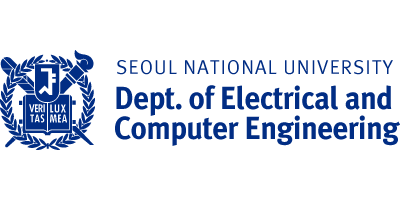[Press Release] Joint Research Team of Seoul National University’s College of Engineering Develops an AI Algorithm to Predict 3D Structures of Nanoparticles

The College of Engineering (Dean Yoosuk Hong) at Seoul National University (SNU) announced that a joint research team led by Professor Kitae Nam from the Department of Materials Science and Engineering (MSE) and Professor Youngmin Kim from the Department of Electrical and Computer Engineering (ECE) has successfully developed an AI algorithm to predict the 3D structures of nanoparticles.
This achievement is a collaborative effort between the materials experiment group and the 3D AI algorithm group.
AI is opening new horizons in scientific methodology and transforming the structure of industries. Following Google's protein structure prediction AI, AlphaFold, NVIDIA has introduced "Bionymo," a platform for new drug development through protein structure analysis and cellular response prediction. Innovations using AI are already happening not just in biotech but also in new materials sectors. Google DeepMind announced an AI capable of predicting new battery materials and a robotic automation laboratory that can automatically verify and develop these predicted new materials.
One of the key challenges in new materials development is predicting the 3D structures of nanoparticles, which directly influence their optical, catalytic, and semiconductor properties—essentially determining the core performance of devices like sensors and batteries. Thus, it is important to predict the 3D structures and the corresponding properties of nanoparticles based on their synthesis conditions, to obtain desired characteristics of nanoparticle based devices.
The newly developed AI algorithm effectively predicts the formation processes of 3D structures during the growth of nanoparticles. It successfully predicted the evolution of small seed particles to complex structures, and the division of 3D structures into chiral enantiomers. Previously, understanding the growth and morphological changes of nanoparticles at the atomic level was very challenging, but applying AI has made prediction fast and effective.
The developed AI is expected to play a crucial role in the development of functional nanoparticles and devices. Particularly, this research confirmed that AI could be applied to advance the synthesis techniques of chiral gold nanoparticles, which have high potential applications in optical devices and sensors. These nanoparticles have been featured twice in Nature journal for their synthesis and device applications in 2018 and 2022, suggesting that AI can have significant potential impact on future industries.
Furthermore, the research marks a significant academic contribution by applying three-dimensional cellular automata for the first time to describe the principles of nano patterns. Cellular automata, known as one of the simplest mathematical models for describing living organisms, had limitations in three-dimensional applications, but these were overcome by integration with AI. Such discoveries have the potential to provide fundamental scientific solutions for understanding not only materials, but also complex natural patterns, including the development principles of chiral enantiomers in living organisms.
Professor Kitae Nam stated, "Based on the developed AI, it's now possible to implement a platform that can predict the 3D structures of nanoparticles and automatically verify them, making the AI-driven new materials development track feasible in Korea."
Professor Youngmin Kim remarked, "This result demonstrates how AI can effectively understand and interpret complex phenomena at the nano level, and this methodology has great potential for expansion into broader scientific and engineering fields."
The lead authors of the research, Dr. Sangwon Im and Master Dongsu Zhang, are currently working at SNU as a postdoctoral researcher and researcher, respectively.
Their results have gained recognition, accepted and published in the prestigious journal in the field of material science, Nature Materials (impact factor of 41.2 in the year 2023), on May 1.
This research was supported by the Future Challenge Defense Technology Development Project of the Agency for Defense Development, the International Joint Technology Development Project of the Korea Institute for Advancement of Technology, and the Scientific Challenge Interdisciplinary R&D Project of the National Research Foundation of Korea.
Original Source: StartupN (https://www.startupn.kr)
Source: https://ece.snu.ac.kr/ece/news?md=v&bbsidx=55543
Translated by: Jiyong Yoo, English Editor of the Department of Electrical and Computer Engineering, cyoo7@snu.ac.kr


